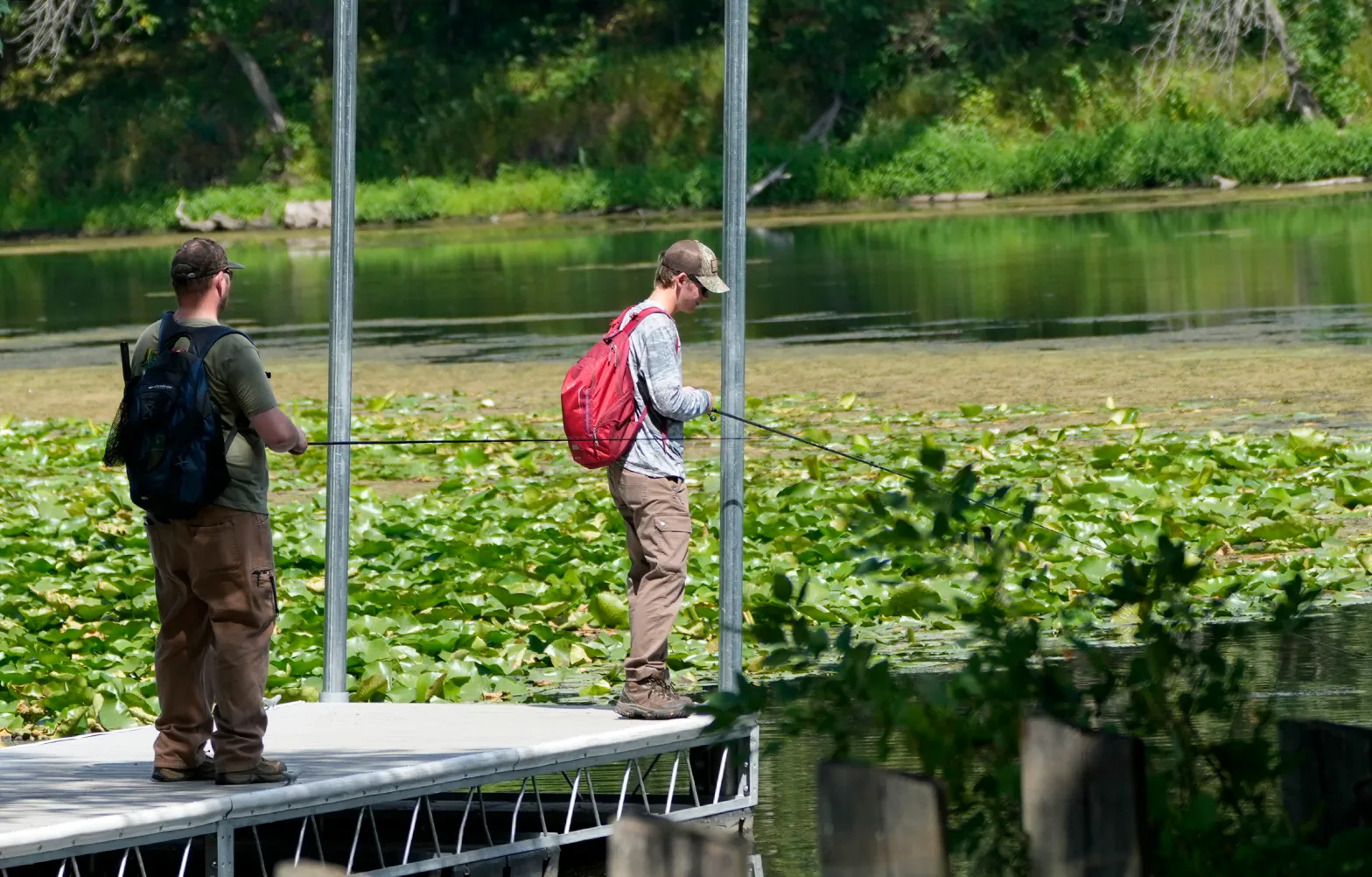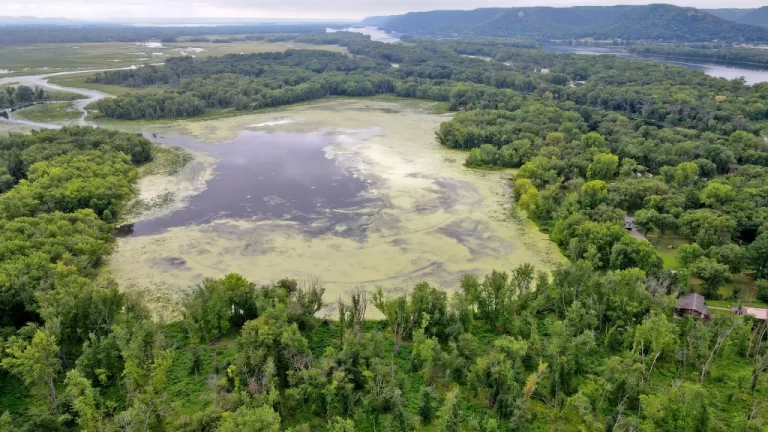Farm to Trouble, Part 3 of 5 — “Not just a Gulf problem: Mississippi River farm runoff pollutes upstream waters”
This story is the third in a five-part series being shared by MSSC with permission called “Farm to Trouble,” a collaborative investigative reporting effort led by AG & Water Desk. The series takes a deep dive into the slow progress to reduce the polluted runoff from agriculture and other industries into the Mississippi River. This runoff from 31 states flows into the Gulf of Mexico and has created a “dead zone” off of Louisiana’s western coast and threatens to make the Mississippi Sound a dead zone in the future.

ELBA, Minn. – Jeff Broberg’s well sits inside a wooden shed not too far from a field he rented about a decade ago to a local farmer.
One day, Broberg discovered the farmer was fertilizing with hog manure. In doing so, combined with the commercial fertilizer he was already using, the farmer was almost doubling the amount of nitrogen on the field in hopes of producing a better corn yield.
Not all of that nitrogen went to the corn. Some of it seeped into the groundwater and was pumped through the well that supplied the water Broberg drank in the form of nitrate, which is made when nitrogen and oxygen combine.
It’s an alarming local impact of a persistent problem that washes far downstream through the Mississippi River watershed, eventually ending up in the Gulf of Mexico, where nitrates are one cause of a low-oxygen “dead zone” that chokes off plant and aquatic life
In Minnesota, Bromberg’s well water tested at 22 parts per million nitrate – more than double what the U.S. Environmental Protection Agency says is the safe limit for the contaminant.
Broberg, a retired geologist who’s now a clean water advocate, had his well tested when he first bought the house in 1986. For the first decade he lived there, it hovered close to 10 parts per million nitrate, the EPA’s limit. When it started to test above that, he began to haul water from a friend’s house in a nearby town.
Finally, he installed a system that reduced nitrate levels in the water he drank, a system that protected him after the incident with the farmer.
But he has questions about what he might have been exposed to when he was drinking the water straight out of the tap years before.
Last year, he was diagnosed with chronic kidney disease. Drinking water with elevated nitrate has been linked in some research to kidney dysfunction. Though it’s nearly impossible to determine the exact cause of such ailments because other lifestyle factors can play a part, he can’t help but wonder what role the water played.
Broberg’s home in rural Winona County, Minnesota, is about a dozen miles as the crow flies from the Mississippi River. The nitrate polluting his well water links him directly to the other end of the river, and the dead zone that blooms there every summer.

This year officials have forecast that the area will be about 5,827 square miles – larger than average, roughly the size of Connecticut and more than twice the target size that a task force of scientists and government officials aims to see by 2035.
Progress on decreasing it has been slow-going, despite billions of dollars in investment.
Still, a 2023 public opinion survey conducted by the University of Missouri – in partnership with the Ag & Water Desk, the journalism collaborative that reported this series – showed only about 25% of Mississippi basin residents understood the causes of the dead zone.
But upstream communities are starting to recognize there are costs closer to home.
Broberg and hydrologist Paul Wotzka are both board members of the Minnesota Well Owners Organization, which last April was among several groups to ask the EPA to intervene in their region’s nitrate contamination problem. In a response last fall, the EPA said “further actions” were needed to protect human health and directed Minnesota state agencies to develop a plan to test drinking water and give residents alternative water sources as soon as possible.
Anything that cuts nutrient pollution upstream will eventually help the Gulf, Wotzka said. And issues like these are personal enough to make people sit up and pay attention.
“That’s why we focus on the kitchen tap. Everybody’s got one, everybody should be concerned,” Wotzka said. “You’ve got to get people to focus on improving the water resource that is closest to them.”
“Farm to Trouble” Credits:
Contributing reporters & news outlets: Erin Jordan, The Gazette (Iowa); Delaney Dryfoos, The Lens (New Orleans); Madeline Heim, Milwaukee Journal Sentinel; Bennet Goldstein, Wisconsin Watch; Eric Schmid, St. Louis Public Radio; Joy Mazur, Columbia Missourian (Missouri); and Connor Giffin, Louisville Courier Journal (Kentucky).
Lead editors: Tegan Wendland, Ag & Water Desk; Erin Jordan, The Gazette; Kelly McEvers, host of NPR’s Embedded podcast
Data visualizations: Jared Whalen, data journalist, Ag & Water Desk
The Ag & Water Desk receives major funding from the Walton Family Foundation, which also funds many organizations within our region. The Desk retains full editorial independence. Please contact info@agwaterdesk.org with any questions.
Organizations referenced in this series that have also received Walton funding: Ducks Unlimited, Tulane University, Gulf Restoration Network, The Nature Conservancy, Louisiana Department of Agriculture and Forestry, University of Iowa, University of Minnesota, Minnesota Center for Environmental Advocacy, Iowa Environmental Council, Practical Farmers of Iowa, Precision Conservation Management, and Lighthawk.